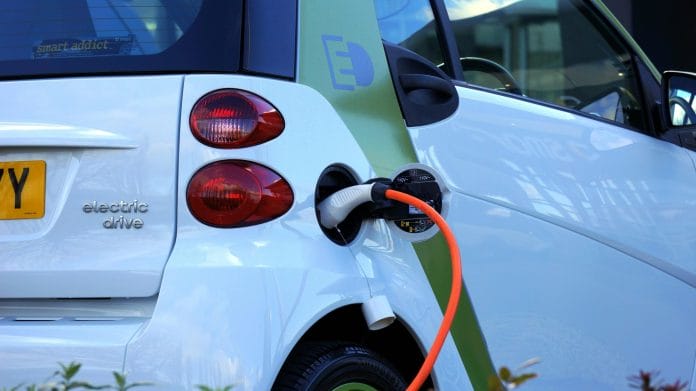By Kavitha Yarlagadda is an independent writer based in Hyderabad, India
The popularity of electric vehicles has surged in the last few years, from just 1.4 per cent of passenger car sales worldwide in 2017 to 14 per cent in 2022. But something changed in the second half of last year and demand is decelerating, with EVs reportedly piling up at car dealerships.
Analysts expect the growth in EV sales to continue slowing this year. Bloomberg last month estimated that EV sales made up 18 per cent of the global total for the third quarter, and expects EV sales of 16.7 million this year, from 14 million.
The main reason is China, according to a Strategy& study released last October. Third-quarter EV sales across 20 markets globally grew by 26 per cent year on year, a figure that would have been “considerably higher”, it said, “if it were not for waning growth in the Chinese market”.
A report on the Indian market found that EV sales slowed in the third quarter of last year despite a growing car market, with Tata Motors, Mahindra, Citroen and Kia affected. The main reason, it said, was due to EVs being more expensive than combustion-engine cars. For the first nine months last year, EV sales barely made up 2.6 per cent of India’s light vehicle sales.
With demand growing more slowly across the world and the EV market oversupplied, carmakers and suppliers have started this year with production cuts, at least one cancelled IPO – for Renault’s EV business Ampere – and even bankruptcies. Sentiment is weakening and a day after Tesla warned of slower sales this year, share prices fell, wiping US$80 billion off Tesla’s valuation.
Many EV makers, including traditional carmakers such as Ford, are struggling to make money from EV sales, and unsold EVs are piling up in showrooms across the US, according to CarEdge data.
General Motors has backed off its goal to produce 400,000 EVs by the middle of the year. Ford is cutting its production of electric pickup trucks and delaying plans to spend US$12 billion on EVs. And Honda has cancelled plans to develop affordable EVs with GM. Since last year, the days’ supply for new EVs has doubled to 88 days – how long the inventory is expected to take to sell – against 59 days for combustion-engine cars.
Conventional carmakers misjudged EV demand and oversupplied the market, and many are having to lower prices to move sales, which hurts their bottom line.
In China, the world’s biggest EV market, sales growth is expected to slow to 20 per cent this year, from a projected 30 per cent last year, according to Fitch Ratings.
With industry consolidation, at least 15 EV start-ups with a combined production capacity of 10 million EVs a year have failed or are failing, according to China Business News. Only big, solid EV makers such as Tesla, Li Auto and BYD are still profitable.
The surge in raw material prices for car batteries last year has abated but pressure remains amid bitter price wars, especially for smaller EV makers, and particularly as battery packs make up a significant part of the EV production cost. At the same time, consumption has been hit generally by China’s economic downturn, and particularly by the end of government subsidies for EV buyers.
So what happened after the initial enthusiasm for EVs? Analysts offer several reasons. Drivers are concerned that EVs won’t hold their value in the resale market as well as combustion-engine cars once the technology improves, have reservations over charging costs and infrastructure, worry over battery safety and, in countries such as the US and India, seem to increasingly prefer hybrids.
Last year, Americans bought more than a million hybrid vehicles, a surge of more than 70 per cent, according to Edmunds.com. In India, where charging infrastructure is still in its infancy, 36 per cent of those surveyed intend to buy a hybrid car next, compared to just 10 per cent for EVs, according to the 2024 Global Automotive Consumer Study. In the US, that’s 21 per cent for hybrids vs 6 per cent for EVs.
Worryingly, interest in combustion-engine cars has returned strongly in the US, with 67 per cent intending to buy one as their next vehicle, up from 58 per cent in the previous annual survey, compared with India’s 49 per cent, down from 53 per cent previously.
In China, the government is encouraging EV makers to go global as it admits to overcapacity and idle factories. Last year, China became the world’s largest car exporter, shipping over a million EVs to countries including Australia and Thailand.
Chinese carmakers are expected to be capable of producing five million more cars, mostly EVs, between 2023 and 2025, while domestic demand is expected to grow by about 3.7 million, according to Bernstein Research. This trend, analysts say, may result in excess inventory both in China and globally.
Meanwhile, China continues to see record numbers of new car models; it already has about 400 EV models. The EV demand slowdown aside, China looks set to continue to dominate both global EV sales and manufacturing.
With most nations having committed to ambitious net zero goals, the slowdown in the EV market is bound to set them back in reaching their targets on time. While achieving climate goals is important for a cleaner world, the EV market slowdown is a reflection that some consumers and carmakers are having a rethink. Governments will have to come up with new strategies to stay on track to achieving their carbon goals.









